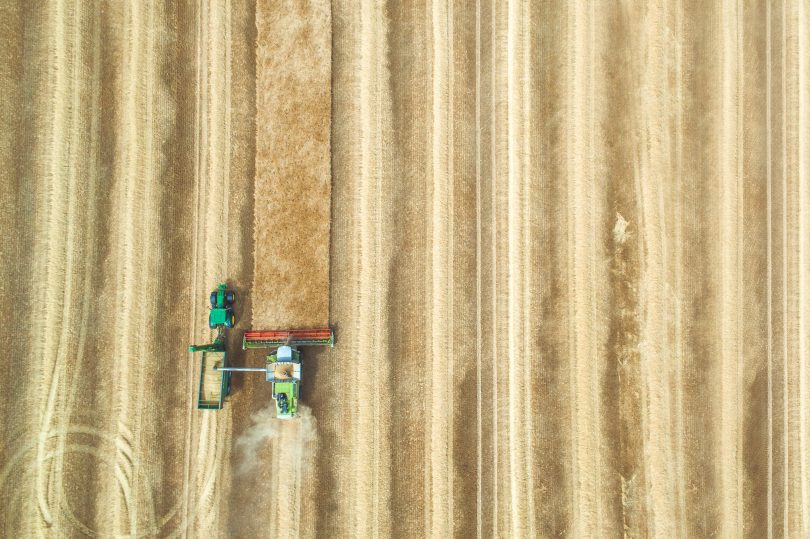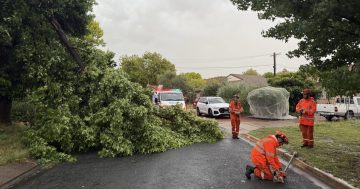
Bird’s eye view of a combine cutting through the final strip of wheat during harvest. Photo: Supplied.
Crop farmers are celebrating a bumper season in southeast NSW, but worry there won’t be enough workers during harvest.
Andrew Daley said he’s never seen so much growth during winter in his 14 years as an agronomist, covering from West Wyalong to Goulburn, down to Wagga Wagga and up to Cowra.
“We’ve had a mild winter with very few big frosts,” he said. “Some of the older generation are saying it’s the most growth they’ve ever seen and that it might be better than the break after the 1983 drought. We went from nothing on the ground to an unbelievable amount.”
The Australian Bureau of Agricultural and Resource Economics and Sciences (ABARES) estimates the 2020-2021 winter crop production in NSW will rise to 14.8 million tons, almost double the 10-year average to 2019-2020 and the largest since 2016-2017.
According to ABARES, it comes down to the above-average rainfall between March and August in nearly all winter cropping regions in NSW off the back of a poor harvest in 2019-2020 due to drought.
“We didn’t harvest a lot of last year’s crops, but if we have average rainfall between now and harvest, we will be looking at bumper yields,” said Mr Daley.
Spring rainfall is very likely to be above-average in all cropping regions in NSW, according to the Bureau of Meteorology’s rainfall outlook from September to November.
Currently, crop yields are fairly consistent across southeast NSW, although regions in the bottom half, such as Yass Valley, haven’t seen as much growth due to cooler temperatures, said Mr Daley.
Securing harvest workers
Farmers are generally happy, especially with how well grain prices are holding up, but many are still holding their breath ahead of harvest.
“I think the biggest worry is the logistics at harvest – finding enough trucks and headers to get the crop off quickly,” said Mr Daley. “It’s going to be hard to do with the amount of grain there will be this year.”
While southeast NSW doesn’t rely on harvest contractors from Victoria as much as northern NSW does, the region lost many of its regular Queensland harvesters during the drought. They were replaced by local contractors, but Mr Daley said there still might not be the numbers needed to harvest the predicted bumper crop.
Just last week, National Cabinet adopted a National Agricultural Workers Code that will allow farmers to cross the borders between NSW, Victoria, South Australia, Northern Territory and the ACT during the COVID-19 pandemic.
The code recognises that agricultural work is often low density and outdoors where the risk of disease transmission is low.
“In the vast majority of cases, the closed borders are merely preventing farmers and workers who are from effectively COVID-19-free areas from conducting work in other COVID-19-free areas across state border lines,” said Federal Minister for Agriculture David Littleproud of the National Cabinet’s decision.
“With a bumper crop expected due to improved seasonal conditions, the decision could not have come at a better time for farmers and agribusinesses in NSW, Victoria, South Australia, Northern Territory and the ACT.”
Queensland, Western Australia and Tasmania didn’t support the code.
GrainGrowers chairman Brett Hosking said the ‘hard’ border closure put in place by Queensland presented significant impacts for growers who are looking at one of the best seasons in several years.
He said there were examples of growers who had been denied travel permits that restricted their ability to travel from one property to another, with the postcodes used to determine permit eligibility being described as a “blunt instrument”.
Original Article published by Hannah Sparks on About Regional.













